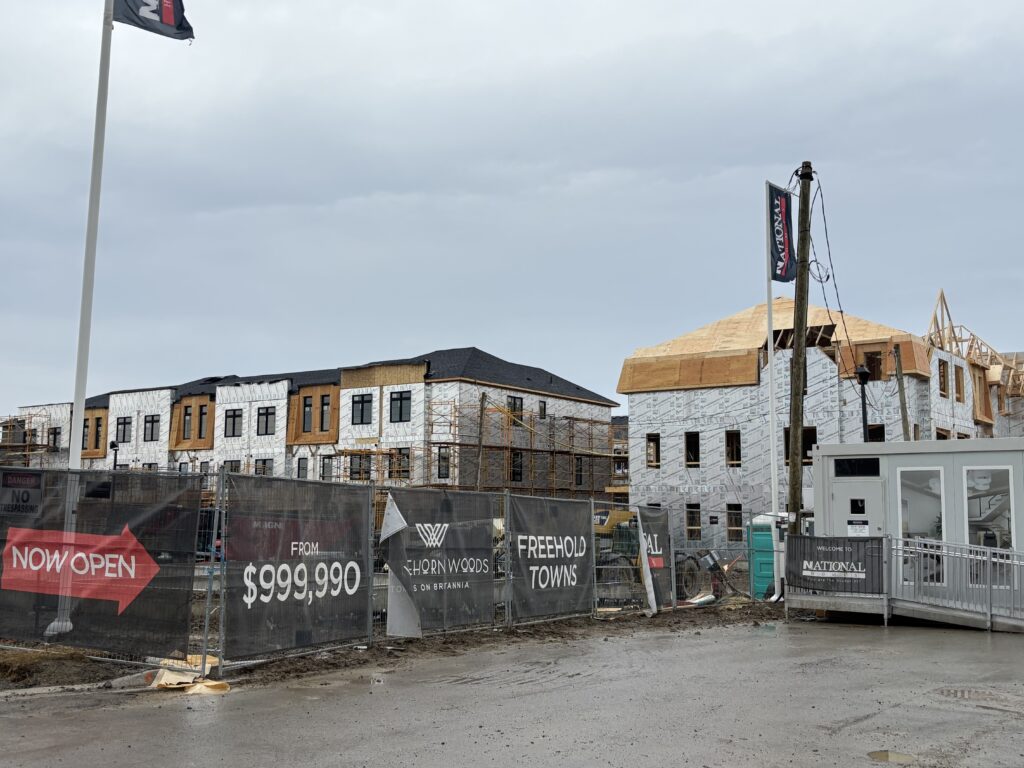
Listen to the whole story here:
Canadians will head to the polls soon for a federal election, and the current Liberal government will face plenty of scrutiny over its efforts to solve housing issues in its 10 years in power if it wants to continue to lead the country.
Between 2015, when the current Liberal government came into power, and January 2025, the consumer price index (as tracked by Statistics Canada) indicates that the cost of “shelter” has risen from 133.9 to 186.4 — an increase of nearly 40 per cent. The consumer price index (CPI) in Canada “is a measure that tracks changes in prices experienced by Canadian consumers over time by comparing the cost of a fixed basket of goods and services purchased by typical consumers.”
The average monthly rent for a two-bedroom apartment in Canada in 2015 (tracked across 35 major cities by the federal government) was $966. In federal statistics released for fall 2024, that same two-bedroom apartment is averaging $1,447 per month, an increase of nearly 50 per cent in 10 years.
“With the rise in rent prices over the last decade compared to incomes, we now have a middle-income housing problem,” said Frank Clayton, a senior research fellow in urban research and land development at Toronto Metropolitan University (TMU). Clayton says housing has become increasingly unaffordable and is now a competition between middle and lower-income earners.
“What that does is make the problem worse for lower-income people because people who would have moved out of cheaper rental accommodation into a condominium or house, they aren’t because they can’t afford to,” he said.
In November 2019, the Liberal government passed the National Housing Strategy (NHS) — a 10-year, $55-billion plan they said was designed to reduce homelessness, improve access to affordable housing and support the construction of new housing units.
The NHS is broken into several plans. The first is the Apartment Construction Loan Program and consists of giving developers lower interest funding if they build rental-purpose housing, not condominiums.
It was successful, though it wasn’t “affordable for the average lower and middle-income earning individual,” Clayton said.
Another plan was to give money to municipalities if they would agree to rezone single detached neighbourhoods to allow up to four units to be built on a single property.
“If somebody wanted to make a single detached house into maybe two or three units, and maybe put a unit above the garage or in the backyard, they could,” Clayton said. “In their existing single-family housing areas, they would agree to what we call densification, allowing three or four units on a property, rather than just one house.”
Despite these efforts, housing experts argue that the policies have not moved quickly enough to address the scale of the housing crisis. For example, while the NHS promised to deliver 100,000 new “affordable” housing units by 2027, experts have pointed out that the pace of construction remains too slow to meet demand.
“There has been progress in some areas but I wouldn’t say that there’s been progress in affordable housing since 2015… It’s been an effort, I wouldn’t even say a good effort, but it’s been a learning experience for the federal government,” said Carolyn Whitzman, an adjunct professor and senior housing researcher at the University of Toronto.
She points out that the federal government invested $55 billion into the NHS but only three per cent of the units built were affordable and almost none of them were family-sized units.
But according to experts like Clayton and Whitzman, we can’t blame the federal government entirely. When building housing units, provinces need to be involved in the process, Whitzman says, and negotiations between the two were not progressing.
“Provinces are responsible for zoning and planning rules in many cases… specifically Ontario, they haven’t really kept up with the kinds of housing supply targets the federal government was talking about, so the negotiation with provinces has been extremely ineffective,” she said.
The federal government also promised to work with Indigenous communities on housing affordability “and consistently hasn’t delivered that program, Whitzman says, even though Indigenous housing providers formed their own organization called NICHI [The National Indigenous Collaborative Housing Inc] about three years ago.”
How much does the federal government’s housing strategy affect first-time home buyers?
“I don’t know what is more frustrating… the fact I am turning 24 this year and can’t afford my own place or the federal government,” said Saba Khan, a first-year master’s student at Guelph University.
“I won’t blame one person because it takes a whole government to get to this point,” Khan said. “I want to see affordable housing that is actually a decent-sized space and not far from major cities.”
Khan says renting is not the ideal solution.
“I have my student loan to repay, the job market is doomed, affording a house seems impossible, and the last thing I want to worry about is not being able to afford rent,” said Khan.
But will a change in government result in a change in success in addressing Canada’s ongoing housing issues? Not according to at least one expert.
“The federal Conservatives are infinitely worse than the Liberals. They have no commitment whatsoever to, or that I have seen in their platform so far, to ending homelessness or to reducing the number of low-income households that are paying 70 or 50 per cent of their income on rent,” said Whitzman.
Whitzman says the NDP is doing better in terms of understanding that the amount of public non-market housing needs to be increased if homelessness and housing needs are to be addressed, while she noted it was the Green Party of Canada that has introduced legislation to define affordable housing.
But there is a long way to go with any political party to solve the housing crisis, Whitzman said.
Reporter for On The Record
Reporter for On The Record
Reporter for On The Record

